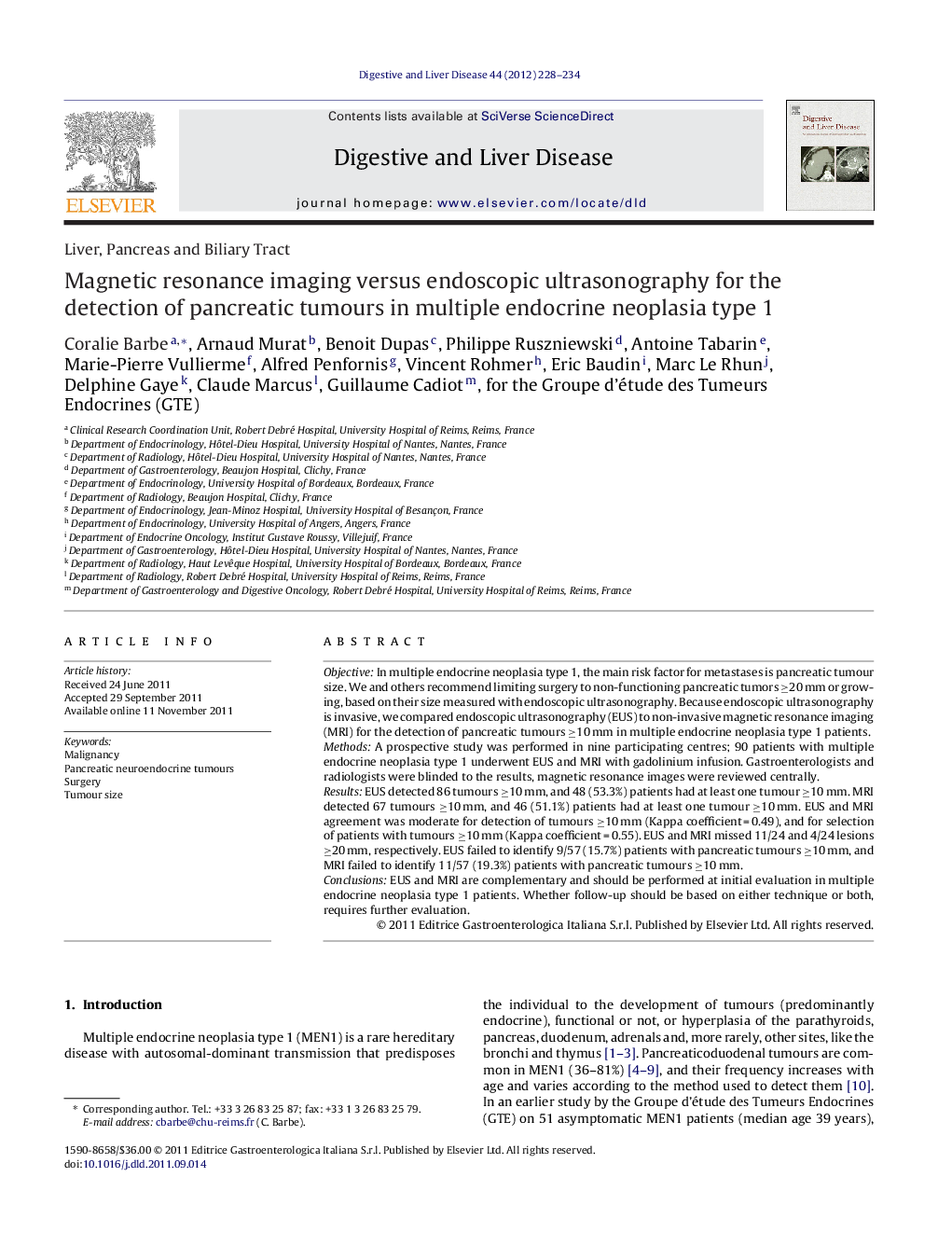| Article ID | Journal | Published Year | Pages | File Type |
|---|---|---|---|---|
| 3262651 | Digestive and Liver Disease | 2012 | 7 Pages |
ObjectiveIn multiple endocrine neoplasia type 1, the main risk factor for metastases is pancreatic tumour size. We and others recommend limiting surgery to non-functioning pancreatic tumors ≥20 mm or growing, based on their size measured with endoscopic ultrasonography. Because endoscopic ultrasonography is invasive, we compared endoscopic ultrasonography (EUS) to non-invasive magnetic resonance imaging (MRI) for the detection of pancreatic tumours ≥10 mm in multiple endocrine neoplasia type 1 patients.MethodsA prospective study was performed in nine participating centres; 90 patients with multiple endocrine neoplasia type 1 underwent EUS and MRI with gadolinium infusion. Gastroenterologists and radiologists were blinded to the results, magnetic resonance images were reviewed centrally.ResultsEUS detected 86 tumours ≥10 mm, and 48 (53.3%) patients had at least one tumour ≥10 mm. MRI detected 67 tumours ≥10 mm, and 46 (51.1%) patients had at least one tumour ≥10 mm. EUS and MRI agreement was moderate for detection of tumours ≥10 mm (Kappa coefficient = 0.49), and for selection of patients with tumours ≥10 mm (Kappa coefficient = 0.55). EUS and MRI missed 11/24 and 4/24 lesions ≥20 mm, respectively. EUS failed to identify 9/57 (15.7%) patients with pancreatic tumours ≥10 mm, and MRI failed to identify 11/57 (19.3%) patients with pancreatic tumours ≥10 mm.ConclusionsEUS and MRI are complementary and should be performed at initial evaluation in multiple endocrine neoplasia type 1 patients. Whether follow-up should be based on either technique or both, requires further evaluation.
